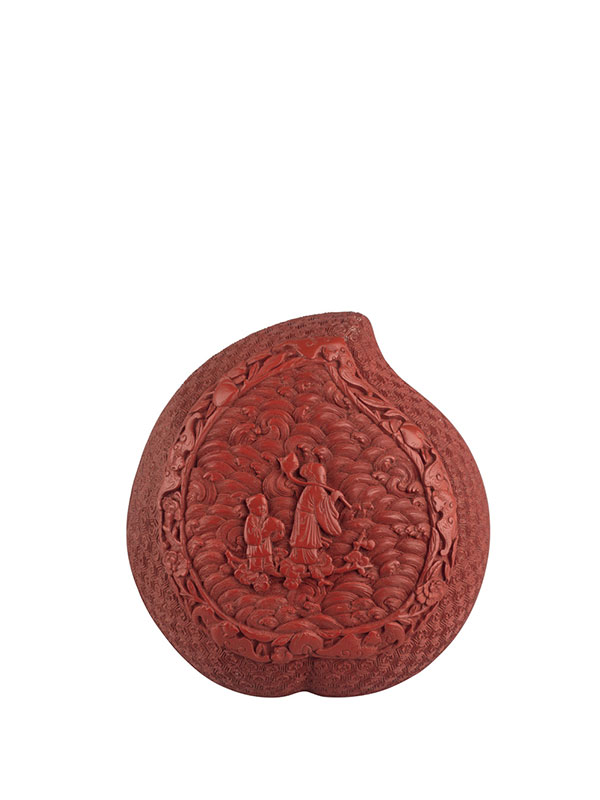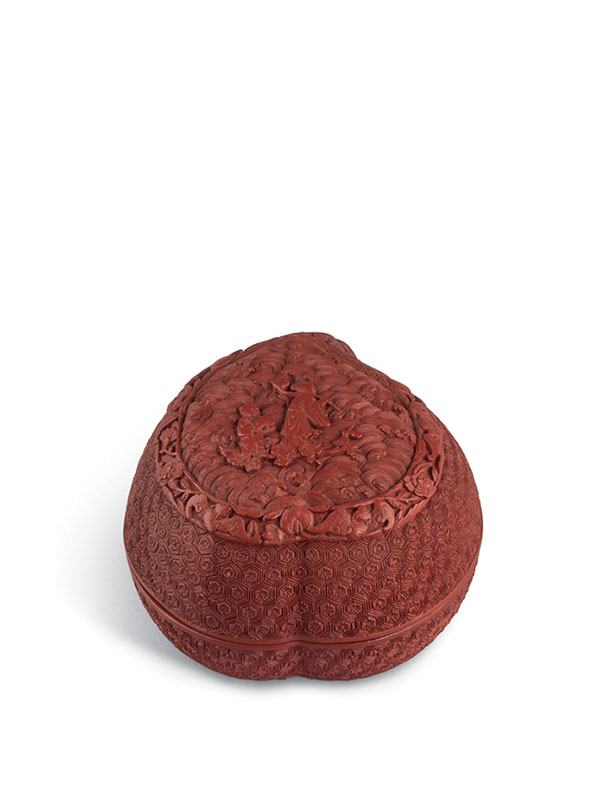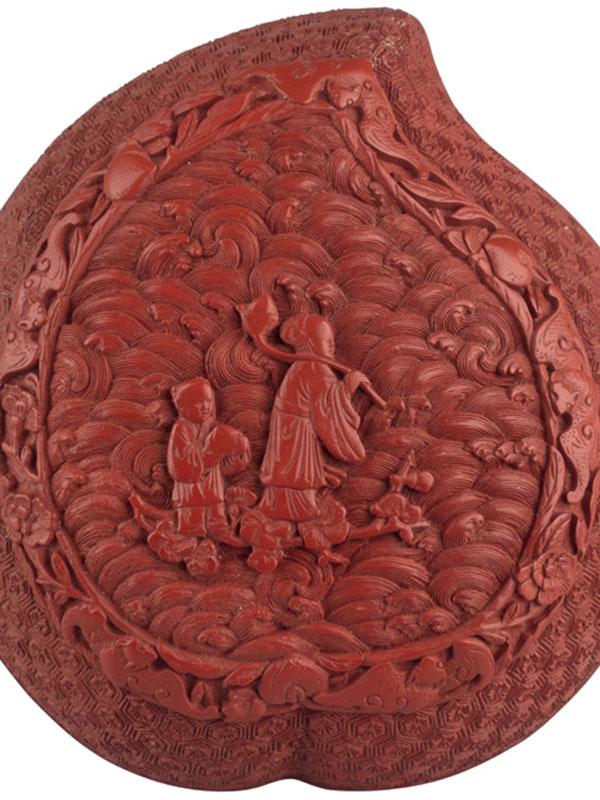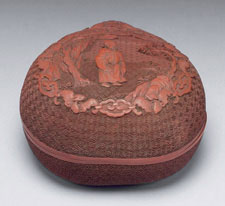Lacquer box of peach form
A lacquer box in the form of a peach with a flat base. The domed cover is carved in relief with an immortal carrying a branch of peach on their shoulder, crossing the wild, wavy water riding on a peach blossom trunk with an attendant holding a peach in his hands. The scene is contained within a band of peach, bat and flower motifs. The sides of box and cover are carved in a low-relief diaper pattern of hexagonal starbursts. The interior and base are lacquered in black.
This beautifully carved lacquer box, its form representing a peach, is of a type that was popular during the mid Qing dynasty. The peach form references immortality: the word for peach (tao) can also mean: ‘May you live long’.[1] The wan (‘ten thousand’) character is a good luck symbol and the combination of peaches, peach blossoms (taohua) and wan symbols expresses the wish ‘May your ten thousand longevities be without limit’.[2] In shape, decoration and proportions this finely carved box can be closely compared to an example in the collection of the Metropolitan Museum of Art.[3] This box is dated early 19th century. Another closely comparable example with an official carved on the cover, dated to the Qing dynasty, is in the collection of the National Palace Museum, Taipei (fig. 1).[4] A closely related lacquer box also in the shape of a peach but its sides fully decorated with various motifs, is in the Muwen Tang collection.[5]
- Tse Bartholomew, T. Hidden Meanings in Chinese Art, Asian Art Museum, San Francisco, 2006, 7.44.1, p. 204
- Tse Bartholomew, T. op. cit. no. 7.59.4, p. 226
- The Metropolitan Museum of Art online collection archive, accession number: 81.1.612a, b
- The National Palace Museum, Taipei online collection archive, no. 中漆37
- Kwan, S. Chinese Lacquer, Muwen Tang, Hong Kong, 2010, no. 112, pp. 328




